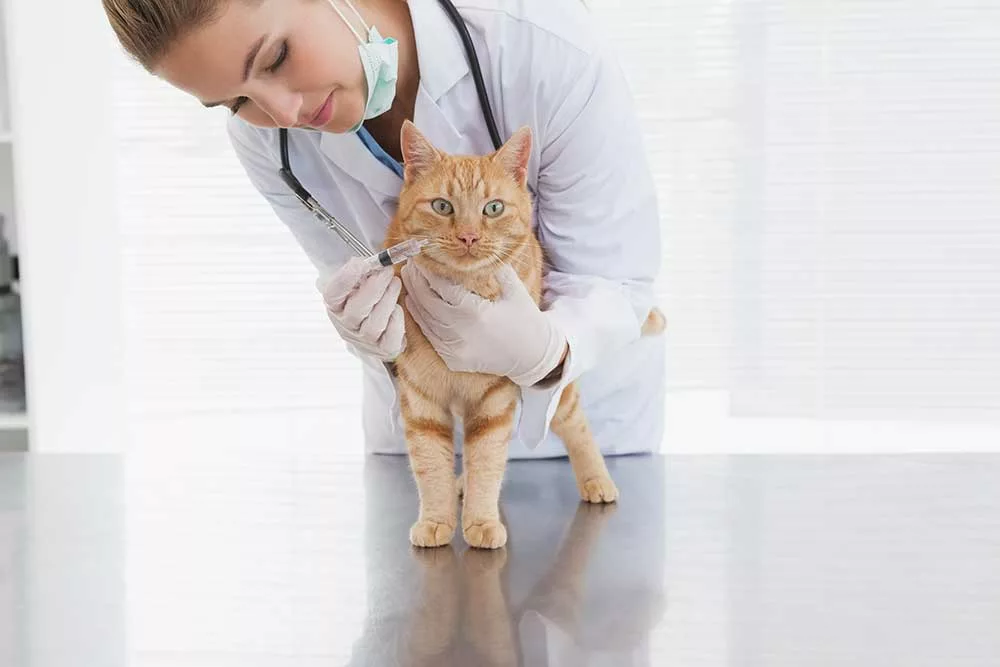Are Rubber Plants Toxic to Cats? Cats are funny creatures and curious by nature. Due to their curios nature, colorful plants and their parts sometimes attract cats. Some cats can respond to plants by scratching them just for fun. Others may bite the stems or leaves to satisfy their curiosity. If you have a rubber plant around your house, you might be worried that your cat sometimes plays with leaves from the rubber tree. You wonder if anything makes the rubber plant toxic to cats. In this article, we consider whether rubber plants are safe for cats. We also suggest how to make your rubber plants safe for cats.
Table of Contents
- What Is the Rubber Plant?
- Is Rubber Plant Toxic to Cats?
- What Should We Do If the Cat Eats the Rubber Plant?
- How To Keep Cats Away From Rubber Plants?
- Conclusion
What Is the Rubber Plant?
The rubber plant, Ficus elastica, is one of the low-maintenance indoor trees that houseplant enthusiasts love to keep around. It has colorful leaves and produces a thick fluid (sap) when scratched or wounded. Rubber plants do not require much water or sunshine to thrive. They require very little upkeep maintenance, making them an excellent indoor choice.
Rubber plants come in more than ten varieties, albeit with similar features. All rubber plants produce sap when their leaves or stems are bruised. The sap contains toxins that help prevent animals from harming rubber plants.
Is Rubber Plant Toxic to Cats?

A Sick Cat
Rubber trees are toxic to cats when they ingest parts of the plant. When the sap from the rubber plant comes in contact with the cat’s body, it causes irritation and itchiness. Also, when the sap is ingested, it irritates the digestive tract. Rubber sap poisoning may lead to diarrhea, vomiting, and a loss of appetite in the affected cat.
Are All Varieties of Rubber Plants Toxic To Cats?
Most rubber plant varieties have sap. The sap contains some chemical substances that cause skin irritation and harm tissues. The sap is an adaptive feature of rubber plants to protect them from being eaten or damaged by animals. However, each variety’s toxicity can differ for various reasons.
How Toxic Are Rubber Plants To Cats?
Rubber plants are fairly toxic to cats. They may not cause severe damage, but they can make your cat uncomfortable and sometimes sick. When cats munch and ingest parts of rubber plants, the sap can cause the mouth part of the cat to become swollen.
What Should We Do If the Cat Eats the Rubber Plant?
Confirming if your cat has ingested part of the rubber plant should be the first thing to do. If you can retrieve some of the rubber plant parts, it will help remove them from the cat’s mouth. This should follow with proper veterinary care. Sometimes, in mild cases, vets could recommend a simple homemade remedy.
Signs of Rubber Plant Poisoning In Cats
If you observe that your cat is showing any of the symptoms below, rubber plant poisoning may be suspected. Many signs suggest rubber plant poisoning, though they are not exclusive to the list below:
- Unusual damage to rubber plant leaves or stem
- The swollen and reddish coloration on the mouth
- Lethargic symptoms
- Oral pain
- Diarrhea
- Loss of appetite
- Vomiting
- Dehydration

Vet and Cat
What should I do if my cat ate a rubber plant?
Start by removing any part of the plant that is in the cat’s mouth. Call a veterinarian or visit the nearest animal care center. You can help the vet treat your cat quickly by providing details about the incident.
How to Treat Rubber Plant Poisoning In Cats
One way vets treat rubber plant poisoning is to remove undigested rubber plant parts from the gut of the affected cat. Another method is to administer moderate doses of an emetic drug. This drug will bind with the toxic sap and force it out of the pet’s body quickly. Vets also use Distilled to flush the mouth and tract of the affected cat. In cases of leaf ingestion, activated charcoal is administered to bind with the toxic sap and prevent the gut from absorbing more toxins.
How To Keep Cats Away From Rubber Plants?
Cats are good climbers and may find ingenious means to get to your rubber plants. One way to keep cats away is to position your rubber plants near other houseplants that cats do not like to visit. Alternating rubber plants with Rosemary and Christmas cactus will make a good natural detergent for most cat species.

Rosemary Plant
You can also spray Rosemary or Lavender il on the rubber plants occasionally. Orange peels have also been found effective. The scents of the spray will gradually frustrate your cat and prevent it from nearing the rubber plants.

Fresh Orange Peels
Place the vases of rubber plants on racks out of the reach of pets. The racks’ geometry should not allow for easy climbing for cats. You can also train your cat to stay away from specific areas of your house where you place the rubber plant.
Conclusion
You can keep rubber plants and cats in the same house with appropriate precautions. Be sure to observe your pet to make sure it is safe. Check the ASPCA List to see if your other houseplants are safe for your pets.
